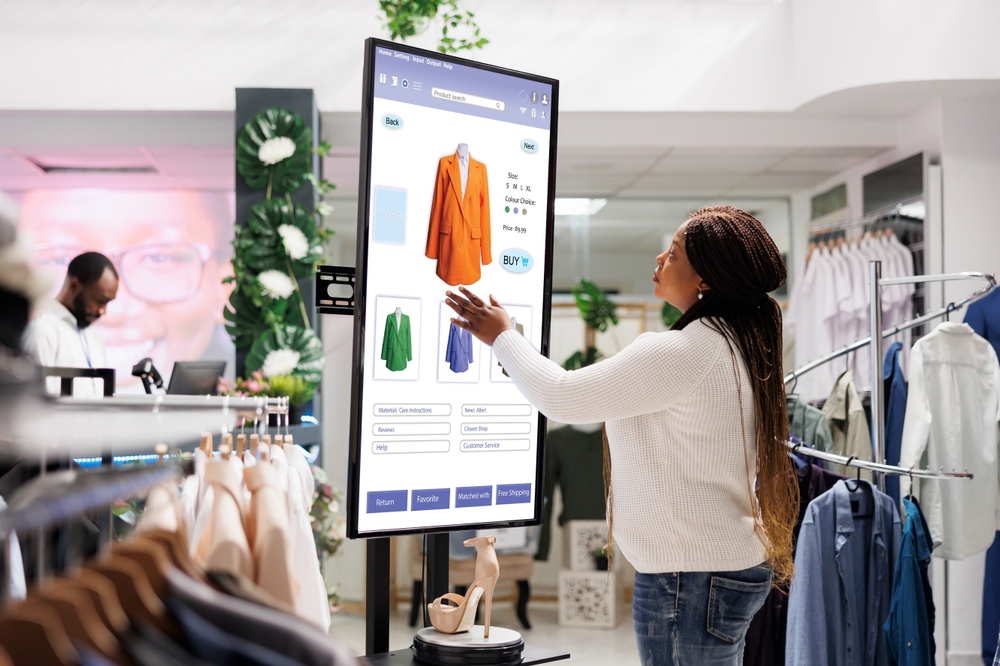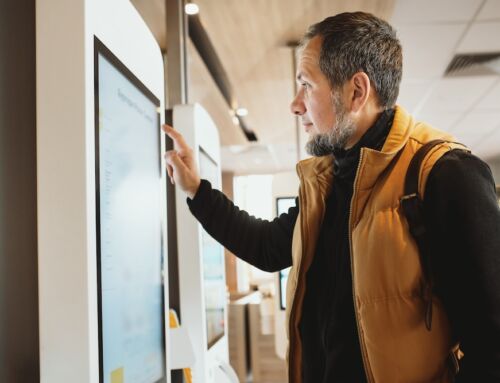As visual creatures, human attention tends to focus on whatever draws the eye most. So with kiosks, functionality centres around the touchscreen interface. In fact, it’s no accident that the vast majority of computerised devices, from smartphones to PCs, are operated via a graphic user interface (GUI) of some sort. It fits with the way our brains work.
This leads to an equal amount of focus on the visual interface in kiosk design. The touchscreen is often the largest single component. Performance metrics like speed of response to touch and visual clarity are considered integral to the overall kiosk experience.
And rightly so. No device is usable without an interface. But the thing with kiosks is, the touchscreen isn’t the only interface. And the others deserve some attention, too.
Part of what makes kiosks so useful across such a wide variety of applications is the fact that they can be adapted to perform many different functions. For example, at Acante, we make kiosks that can scan items as part of a sales transaction, and we make others that can take photographs, scan documents, and read fingerprints and ID cards as part of identification and authorisation procedures. And plenty more besides.
All of these functions require a unique purpose-built interface. Via a modular build approach, you can pick and choose the relevant hardware you want for a specific use case, and simply embed it in the kiosk. Hardware options we offer include:
- Cameras: Can be used for a range of purposes, such as identification, registration and security.
- Biometric scanners: The most common type of biometric scanner is for fingerprints. However, specially adapted cameras can also be used for iris and retina scanning, while standard cameras can be used for facial recognition with the right software.
- Signature pads: E-pad modules allow signatures to be collected digitally at kiosks. Ideal for documentation services like making visa, passport or driving licence applications.
- Document scanners: On the same theme, applications for official documents often require ID and other paperwork to be scanned in for authorisation. Making this possible via a kiosk requires a document scanner to be added.
- RFID readers: RFID chips are one of the most common sensor technologies used for identification and tracking purposes. They have a huge range of uses, including being fitted into ID cards for things like building access and authorisation. Fitting an RFID reader into a kiosk allows this to be combined with a range of other functions.
- Card reader/dispenser: As well as hardware that reads ID cards, we can install modules that print them too.
- Printers: Standard paper printers can be put to a range of uses, such as printing receipts.
- Bar code scanners: Familiar tech used to scan items for sale in retail settings.
- Payment card readers: Finally, for all sales-focused self-service applications, payment terminals are an absolute must as part of the kiosk set up.
Embedded hardware is crucial to making kiosks as flexible as they are. And for that reason, at Acante, we take the quality of our hardware modules as seriously as we do our touchscreens. A perfectly functioning touchscreen matters not if the scanner to register items for sale isn’t working, or you can’t register or gain access because the camera and RFID reader are faulty.
Whether you choose one of our off-the-shelf interactive kiosk models pre-loaded with select embedded hardware for indent, information or self-service uses, or ask us to build a bespoke model with your chosen blend of modules, we always guarantee robust, long-lasting performance for all parts.
Get in touch to find out more.




